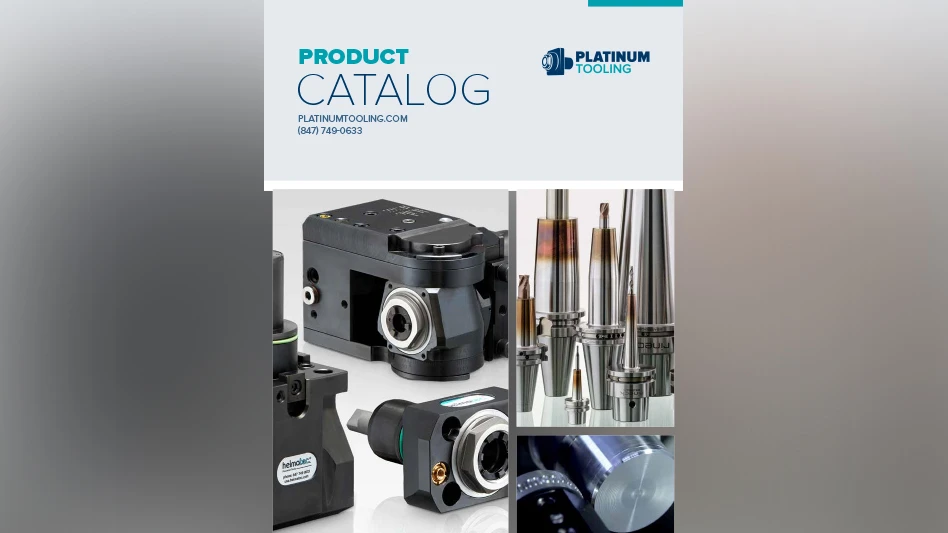
Contract manufacturers, job shops, and original equipment manufacturers (OEMs) in the medical device industry require improvements to productivity processes to stay competitive. And, medical part manufacturing poses a variety of challenges, as high-precision parts incorporate a range of full 5-axis moves.
For example, highly precise complex parts used to fix bones are rarely composed of straight or square shapes, instead involving contours for functionality and aesthetics. Implants benefiting from advanced machine technology include bone plates and screws, femoral heads and acetabular cups for hip replacements, and parts for knee and spine implants. Components can range from just less than 1" to more than 10" long and are typically machined from high-performance titanium and stainless steels alloys, as well as medical plastics such as PEEK.
Growth from a surge in customers, along with a more diversified customer base, increases the pressure to raise output while controlling manufacturing costs. More often than not, the answer comes from advanced, all-in-one, productivity-enhancing machining systems that provide integrated productivity-boosting packages with high-speed spindles, multiple-pallet automation, full 5-axis positioning, and user-friendly controls.
Case in point
For one medical shop, advanced machining systems were critical to increasing productivity. The shop machined implants with 5-axis machining centers with 15,000rpm to 20,000rpm spindles, trunnion table 5-axis capability, and two-pallet automation. However, a surge of incoming work and a desire to optimize existing jobs forced the shop to consider machining platforms with higher rpm spindles, smaller footprints, and more pallets. Mikron HSM 400U LP machining centers from Lincolnshire, Illinois-based GF Machining Solutions provided solutions.
The shop now has three Mikron HSM 400U LP machines with 42,000rpm HSK-E40 spindles, tilt-table trunnion 5-axis capabilities, 220° of B-axis rotation, Heidenhain iTNC 530 controllers, and rotary automation systems with 18 workholding pallets. The machines occupy two-thirds of the floor space, weigh less, and have larger work envelopes than the previous machines.
Vector spindles on the machines deliver consistent surface finishes and part details, while reducing machining time for semi-finishing and finishing. With high dynamics and 1.7g acceleration, the machines reduce non-cut time and maximize spindle utilization. Liquid-cooled, linear direct-drive motor technology allows short setting times and high dynamic rigidity of the attitude control. The linear direct drive with central oil lubrication reduces friction-induced wear and ensures long-term precision.
To orient complex, contoured parts such as bone plates for drilling, threading, and surfacing, medical shops often use 3+2, 5-axis positioning techniques. The Mikron axes rotate up to 200rpm, reducing positioning time when compared with trunnion-table 5-axis machines.

Fast workpiece positioning is critical for medical parts that have 20 to 30 threaded holes. When each hole requires machining a flat, a counterbore, a through-hole, and a thread, small amounts of extra speed in B-axis rotation results in long-term cycle time reductions. With higher spindle speeds and faster 5-axis part positioning, the Mikron mills reduce cycle times 20% to 30%.
To optimize application of the Mikron machines’ pallet systems, some medical shops fit pallets with a tombstone that can hold multiple similar parts, enabling consistent tool packages and eliminating the need to change fixtures. This approach ensures lights-out operation between shifts without loading, unloading, or removing fixtures.
With the machines’ Heidenhain controls, operators can perform edits at the machine in the conversational mode saving programming time and minimizing delays.
Automation’s advantage
Cost savings through automation are also changing the way medical contract manufacturers look at machine tool purchases. Machine tools with pallet changing or bar feeding capability can provide maximum versatility and productivity. Such integrated automation allows manufacturers to be competitive and get the most out of their equipment and skilled workforce.
A concurrent benefit is flexibility. For the medical shop with the Mikron HSM 400U LPs, typical job lot sizes range from 10-to-300 pieces, yet it often receives five-piece orders as well. The machines make setups for these jobs fast and accurate, while their pallet changers boost efficiency for the shop’s legacy products.
The shop proves out and validates small batches of prototype parts, then when repeat orders come in, program and fixturing are ready to begin production.
With tolerances around 0.0005" and surface finishes such that post-machining, finishing operations on medical parts must be limited to only deburring of complicated double- or triple-lead threads. Part precision and quality are crucial in machining processes. In addition, this minimizes the need for hand finishing, significantly reducing the possibility that a part will be scrapped due to inconsistent manual processing.
High-speed machining techniques contribute to manufacturing quality, efficiency, and cost control, allowing medical contract manufacturers, such as the one using the Mikron HSM 400U LPs, to replace custom tools with lower-cost, off-the-shelf tools. Rather than roughing a part, creating a contour with a form tool, and then finishing with other tools, the shop applies one roughing tool and one finishing tool to complete a part.
Medical parts contract manufacturing demands a level of responsibility beyond that of general machining. Start-to-finish control is crucial because medical parts must be perfect. Medical contract manufacturers purchase certified raw material and bring the parts to their final dimensions, completing first piece, in-process, and final inspections, certifying that a part is ready for human use. Customers rely on the manufacturers’ process control and team to provide consistent products. Investment in the right machining technology helps medical contract manufacturers deliver quality products on time.
Get curated news on YOUR industry.
Enter your email to receive our newsletters.
Latest from Today's Medical Developments
- Meet AEON: the future of humanoid robotics
- Okuma: Extraordinary Starts Where Limits End
- Revolutionize medical device maintenance with FUCHS NYEMED 7560
- #46 Lunch + Learn Podcast with SMW Autoblok
- Diagnosis: Workflow Inefficiency | Treatment: Okuma Robot Loader Series
- Discover the future of manufacturing at GROB's 5-AXIS LIVE!
- Revolutionizing quality control with Hexagon's Autonomous Metrology Suite
- Autocam Medical's $70 million expansion to boost orthopedic job creation






